macs14
Source: Why Does Apple Move to ARM and Will it Still Supports Intel Macs?
资料来源: Apple为什么要转向ARM,并且仍将支持Intel Macs?
More recently, you might have viewed or heard a lot about the probable release of the new Macs with Apple’s custom ARM in 2021. In fact, just at the WWDC on 22 June, Apple has declared that it would make a transition from Intel x86 to custom ARM on the future Macs. This announcement, as it was made, has caused a great sensation among industries and the public.
最近,您可能已经看过或听到了很多有关可能在2021年使用Apple定制ARM的新Mac的发布。实际上,仅在6月22日的WWDC上,Apple宣布它将从Intel x86过渡到在未来的Mac上定制ARM。 该声明的发布在业界和公众中引起了极大的轰动。
It seems unsurprising that Apple will make such a transition on Macs since now Macs are the only Apple device that is still running Intel x86. All other Apple devices including iPhone, iPad, Apple Watch, AirPods as well as Apple TV are now custom ARM-based.
苹果将在Mac上进行这样的转换似乎并不奇怪,因为现在Mac是唯一仍在运行Intel x86的Apple设备。 现在,所有其他Apple设备(包括iPhone, iPad , Apple Watch , AirPods以及Apple TV)都是基于ARM的定制产品。
Just like the iPhone which shifted to use custom ARM CPU cores since the launch of the iPhone 4 running A4 ARM chip, Mac is making the same transition. And actually, Apple has already made a few transitions to ARM on Macs. You can see a custom T1 ARM security chip on the Macbook Pro launched in 2016. You can also see the T2 ARM security chip on the iMac introduced in 2018.
自从iPhone 4开始运行A4 ARM芯片以来,iPhone就转变为使用自定义ARM CPU内核,Mac也在进行同样的过渡。 实际上,苹果已经在Mac上进行了一些向ARM的过渡。 您可以在2016年推出的Macbook Pro上看到自定义的T1 ARM安全芯片。您还可以在2018年推出的iMac上看到T2 ARM安全芯片。
However, the question is — why is Apple switching from Intel x86 which has been used on Macs for over a decade to the ARM on the future Macs? Well, don’t fret if you’re wondering about the question. As Apple’s ARM transition starts to arise, in order to better follow the understanding of why Apple makes such a decision, the article will first explore what ARM means as well as its difference from Intel. Then it’ll dive into the reasons why Apple will shift from Intel to ARM on Macs. Let’s continue to check.
但是,问题是–苹果为什么要从已经在Mac上使用了十多年的Intel x86切换到未来Mac上的ARM? 好吧,如果您想知道这个问题,请不要担心。 随着苹果公司开始进行ARM过渡,为了更好地理解为什么苹果做出这样的决定,本文将首先探讨ARM的含义以及与英特尔的区别。 然后将深入探讨Apple在Mac上从Intel转向ARM的原因。 让我们继续检查。
You May Also Read
您可能还会阅读
What is CPU Core and is an Octa-Core Better than a Quad-CoreHere is Why Apple A13 Bionic Chipset WinsWhat is Best Processor in SmartphoneGiving Up or Persistence Qualcomm? There is Forks in the Road!Difference: Qualcomm Snapdragon 845 vs 835MediaTek Helio P65: 12nm Process and Introduced in JulyMediaTek vs Snapdragon: Which Processor Suits Your Values Better?
什么是CPU核心?八核比四核更好? 这就是为什么Apple A13仿生芯片组赢得 智能手机 放弃或持久性高通的 最佳处理器是什么 ? 路上有福克斯! 区别:高通Snapdragon 845与835 联发科技Helio P65:12纳米Craft.io并于7月推出 联发科技与Snapdragon:哪种处理器更适合您的价值?
什么是ARM (What Is ARM)
When it comes to what ARM means, it, in fact, has two meanings from two different levels. However, it’s the former that creates or licenses the latter. Let’s see what they mean:
说到ARM的含义,实际上它具有两个不同层次的两个含义。 但是,是前者创建或许可了后者。 让我们看看它们的含义:
When you see a discussion on the top largest supplier of microprocessor technology and the word ARM is being used, it refers to a company called ARM. ARM, short for Acorn RISC Machine, is a British company that develops and designs its own set of processors.
当您看到有关微处理器技术的最大供应商的讨论并且使用ARM一词时,它表示的是一家名为ARM的公司。 ARM是Acorn RISC Machine的缩写,是一家英国公司,致力于开发和设计自己的处理器集。
It’s now the leading processor technology supplier whose major operating mode is to license out its ARM instruction set architecture (a method telling a processor how to recognize and execute code on a particular processing unit) that allows other companies to build their custom CPU cores implementing ARM instruction set. You can see Qualcomm’s Snapdragon, MediaTek’s Helio P65, iPhone 11’s A13 Bionic chip, and Huawei’s Kirin are all custom ARM CPU cores whose instruction set architectures are licensed out from the ARM company.
现在,它是领先的处理器技术供应商,其主要操作模式是许可其ARM指令集体系结构(一种告诉处理器如何在特定处理单元上识别和执行代码的方法),从而允许其他公司构建实现ARM的自定义CPU内核。指令系统。 您会看到高通的Snapdragon , 联发科的Helio P65 , iPhone 11的A13 Bionic芯片和华为的麒麟都是定制的ARM CPU内核,其指令集架构已获得ARM公司的许可。
When you view a discussion on particular CPU cores and the word ARM is applied, it stands for the CPU architecture which is developed by the ARM company. The so-called ARM processors are CPU cores that are built by scores of different companies based on the ARM architecture.
当您查看有关特定CPU内核的讨论并使用ARM一词时,它代表由ARM公司开发的CPU体系结构。 所谓的ARM处理器是由数十家基于ARM体系结构的不同公司构建的CPU内核。
Note:
注意:
Instruction Set:The total set of all the instructions in machine code which can be recognized and executed by a particular processor).
指令集:机器代码中可以由特定处理器识别和执行的所有指令的总集合。
CPU Architecture:A CPU only works when given specific instructions (instruction set). That is, the CPU processor needs to be implemented by the instruction set. The link between the processor and the instruction set is what makes a CPU architecture. Different CPU architectures normally have their own instruction set.
CPU体系结构: CPU仅在给出特定指令(指令集)时才能工作。 即,CPU处理器需要通过指令集来实现。 处理器和指令集之间的联系是构成CPU体系结构的原因。 不同的CPU架构通常具有自己的指令集。
Nowadays, ARM has been the most ubiquitous CPU architecture which is licensed and utilized by almost all phone companies in modern mobile devices like smartphones and tablets and other consumer electronics such as smartwatches, TV as well as earphones. Moreover, ARM is making its way into the PC market. You can see ARM-based Windows being introduced. You can also notice that Apple’s new Mac running its custom ARM CPU is upcoming.
如今,ARM已成为最普遍使用的CPU体系结构,几乎所有电话公司都在现代移动设备(如智能手机和平板电脑)以及其他消费电子产品(如智能手表,电视和耳机)中获得许可和使用。 而且,ARM正在进入PC市场。 您可以看到引入了基于ARM的Windows。 您还可以注意到,运行其自定义ARM CPU的Apple新款Mac将面世。
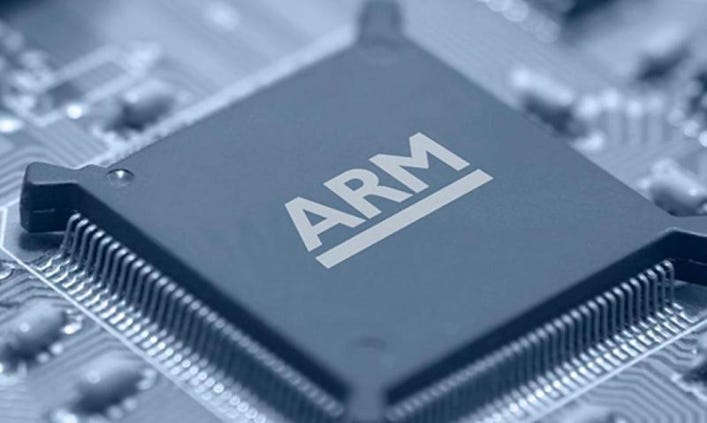
ARM VS Intel CPU内核:有什么区别 (ARM VS Intel CPU Cores: What’s the Difference)
Intel is also the ubiquitous CPU architecture which is particularly used in a great number of different CPU cores especially the Intel x86. ARM and Intel are today’s two major CPU architectures used by all smartphones and many of the PCs. Prior to the exploration of why Apple is poised to replace the Intel x86 with the custom ARM processor, it’s of great necessity to make a comparison between the ARM and the Intel CPU cores. Let’s see their difference:
英特尔还是无处不在的CPU体系结构,尤其是在很多不同的CPU内核中,尤其是Intel x86中,都使用了Intel。 ARM和Intel是当今所有智能手机和许多PC使用的两种主要CPU架构。 在探索苹果为何准备用定制的ARM处理器取代Intel x86之前,有必要在ARM和Intel CPU内核之间进行比较。 让我们看看它们的区别:
ARM VS Intel CPU内核:指令集 (ARM VS Intel CPU Cores: Instruction Set)
As mentioned earlier, CPU only works to operate by given a set of instructions that can be recognized and executed by the CPU processor. Currently, there are two main types of instruction sets including CISC (Complex Instruction Set Computer) and RISC (Reduced Instruction Set Computer). In terms of the instruction set, the difference between the ARM and the Intel CPU cores is that the former is RISC while the latter CISC.
如前所述,CPU仅通过给定的一组指令来工作,该指令集可以被CPU处理器识别和执行。 当前,有两种主要类型的指令集,包括CISC(复杂指令集计算机)和RISC(精简指令集计算机)。 在指令集方面,ARM和Intel CPU内核之间的区别在于,前者是RISC,而后者是CISC。
ARM’s RISC instruction set offers simple instructions scattered in multiple lines, each of which is executed in one compute cycle. Intel’s CISC, by comparison, is a single line complex instruction that offers many more instructions, many of which execute multiple tasks.
ARM的RISC指令集提供分散在多行中的简单指令,每条指令在一个计算周期中执行。 相比之下,英特尔的CISC是单行复杂指令,可提供更多指令,其中许多指令执行多个任务。
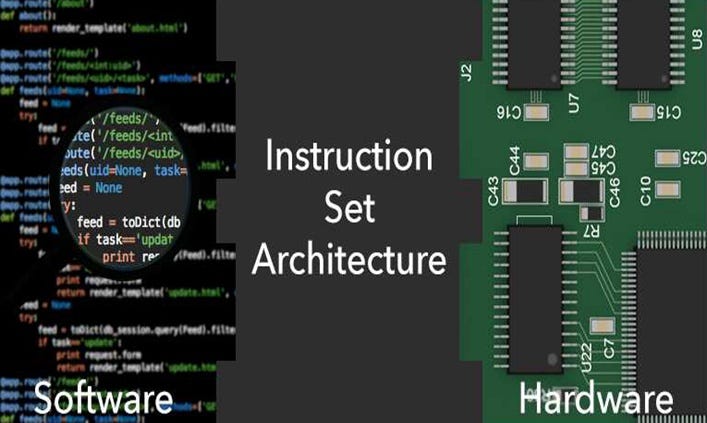
ARM VS Intel CPU内核:性能和能效 (ARM VS Intel CPU Cores: Performance & Power Efficiency)
In terms of processor performance, it’s inadvisable to allege which one is better. However, due to the complex one-line instructions, the Intel does do a good job in improving performance as well as compatibility with the power-hungry desktop and laptop CPUs. Nevertheless, decoding the complex instructions consumes more power and hence reduces power efficiency.
在处理器性能方面,不建议宣称哪个更好。 但是,由于复杂的单行指令,英特尔在提高性能以及与耗电的台式机和笔记本电脑CPU的兼容性方面做得很好。 然而,解码复杂指令消耗更多功率,因此降低了功率效率。
Different from the Intel, the ARM processors using simple RISC instruction set keep energy wastage to a minimum. Also, due to the simple instruction set, they need fewer transistors, which allows for smaller integrated circuitry. All these bring high power efficiency for ARM processors.
与英特尔不同,使用简单RISC指令集的ARM处理器将能量浪费降至最低。 同样,由于指令集简单,它们需要更少的晶体管,从而可以使用更小的集成电路。 所有这些都为ARM处理器带来了高能效。
ARM VS Intel CPU内核:定制或直接出售 (ARM VS Intel CPU Cores: Custom or Directly-Sold)
There is another important difference between ARM and Intel CPU cores — the way they are granted. Intel CPU cores are developed and manufactured under the full control of the Intel company itself and then are directly sold to other companies. ARM CPU cores, by comparison, are mainly tailored by the licensees based on the ARM CPU architecture the ARM company licenses out.
ARM和Intel CPU内核之间还有另一个重要区别-授予方式。 英特尔CPU内核是在英特尔公司本身的完全控制下开发和制造的,然后直接出售给其他公司。 相比之下,ARM CPU内核主要由被许可方根据ARM公司许可的ARM CPU架构进行定制。
In fact, compared with Intel CPU cores which are directly sold by the Intel company, custom ARM CPUs built by the particular companies can lead to good results such as high performance if they are built correctly.
实际上,与英特尔公司直接销售的英特尔CPU内核相比,由特定公司制造的定制ARM CPU如果正确构建,可以带来良好的结果,例如高性能。
ARM VS Intel CPU内核:异构计算 (ARM VS Intel CPU Cores: Heterogeneous Computing)
Another difference between these two types of CPU cores rests in one unique feature ARM architecture has — heterogeneous computing. This feature makes the ARM architecture include both FPGA-style programmable logic and software-programmable engines, which greatly allows for enhancing user flexibility to implement wanted functionality and platforms in hardware, software, or a combination of both. Applications like machine learning, deep learning, and 5G wireless will benefit from this new feature of the ARM architecture.
这两种类型的CPU内核之间的另一个区别在于ARM体系结构具有的一项独特功能-异构计算。 该功能使ARM体系结构既包括FPGA样式的可编程逻辑,又包括软件可编程的引擎,这极大地增强了用户的灵活性,从而可以在硬件,软件或两者的组合中实现所需的功能和平台。 机器学习,深度学习和5G无线等应用程序将受益于ARM体系结构的这一新功能。
Also, since it allows different CPU parts to work together, heterogeneous computing can improve the performance of the ARM CPU cores. Moreover, this feature is particularly helpful for keeping TDP (Thermal Design Power) low for mobile applications, which can lead to the high power efficiency of ARM CPUs.
另外,由于它允许不同的CPU部件一起工作,因此异构计算可以提高ARM CPU内核的性能。 此外,此功能对于保持移动应用的TDP(热设计功耗)较低特别有用,这可以导致ARM CPU的高功率效率。
Intel CPU cores, by comparison, aren’t powered with heterogeneous computing, making them incapable of matching ARM in terms of performance and efficiency,
相比之下,英特尔CPU内核没有采用异构计算,因此它们在性能和效率方面无法与ARM相匹配,
Brief Sum-up of the ARM VS Intel Comparison
ARM VS Intel比较的简要总结
ARM and Intel CPU cores are different from an engineering standpoint and they do have their own strengths as well as weaknesses. However, it’s worth noting that ARM has won out as the primary option for low power portable devices like smartphones for decades, while Intel is a comparatively new arrival to this field. Besides, the ARM architecture is now making its way into laptops and other consumer electronic devices where high power efficiency is needed.
从工程的角度来看,ARM和Intel CPU内核是不同的,它们各有优缺点。 但是,值得注意的是,数十年来,ARM已成为低功耗便携式设备(如智能手机)的主要选择,而英特尔是该领域相对较新的产品。 此外,ARM体系结构现在已进入需要高功率效率的笔记本电脑和其他消费电子设备中。
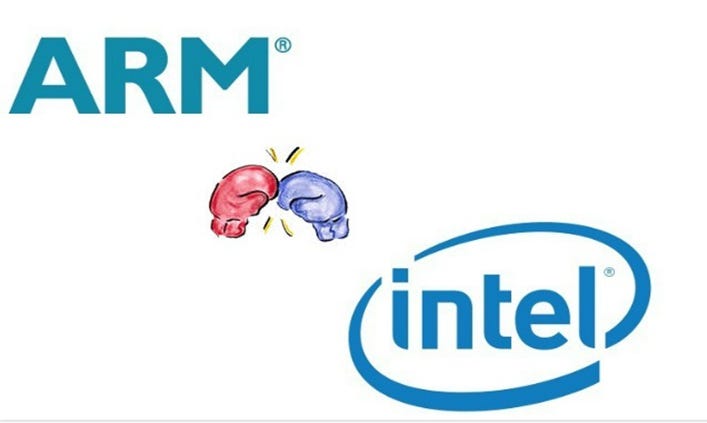
苹果为何准备从Mac的Intel切换到ARM (Why Is Apple Poised to Switch from Intel to ARM for Macs)
Apple’s decision to switch the Macs CPU from Intel, the world’s most ubiquitous CPU line for PCs to its custom ARM may seem radical, but there are indeed the key factors that make this decision irreversible. Now keep the above exploration of ARM as well as the comparison between ARM and Intel in mind to better understand the reasons why Apple is poised to make a transition to ARM on the future Macs.
苹果公司决定将Macs CPU从英特尔这一世界上最普遍的PC CPU产品线改为定制ARM的决定似乎是激进的,但确实有一些关键因素使这一决定不可逆转。 现在,请牢记以上关于ARM的探索以及ARM和Intel之间的比较,以更好地理解Apple准备在将来的Mac上过渡到ARM的原因。
苹果现在能够开发适用于Mac的高性能定制ARM芯片 (Apple Is Now Capable of Developing Its High-performance Custom ARM Chip for Macs)
Back in 2006, Apple’s moving Macs to Intel x86 is led by its incapability of investing significant in-house chip design teams and vast capital in developing its own processor technology. However, now it’s capable of developing its own processor for Macs.
早在2006年,苹果公司就没有能力投资大量的内部芯片设计团队,也没有能力投入大量资金来开发自己的处理器技术,从而将Macs迁移到英特尔x86。 但是,现在它能够开发自己的Mac处理器。
On the one hand, since 2007 when iPhone 4 running A4 ARM chip was launched, Apple has been developing its custom ARM CPU cores for every newly-launched iPhone and even iPad, making it increase the strength of the in-house chip design team and the capability of optimizing its own ARM chips with extreme specificity. On the other hand, thanks to massive volumes of mobile device sales, now Apple has the vast capital to fuel in a new project (shift to developing its own ARM CPU on the future Macs).
一方面,自2007年推出运行A4 ARM芯片的iPhone 4以来,苹果一直在为每款新推出的iPhone甚至iPad开发其定制的ARM CPU内核,从而增强了内部芯片设计团队的实力。具有极高的特异性来优化自己的ARM芯片的能力。 另一方面,得益于大量的移动设备销售,现在苹果公司拥有巨大的资金来推动一个新项目(转向在未来的Mac上开发自己的ARM CPU)。

英特尔停滞不前PC处理器技术 (Intel Is Stagnating in PC Processor Technology)
Intel’s stagnation in PC processor technology is also part of the reason why Apple is making the transition to ARM for Macs CPU. Intel x86 was once the most popular CPU for PCs. But for several years now, Intel company hasn’t made any breakthrough such as a new jump in efficiency and computer power in x86 processor technology.
英特尔在PC处理器技术方面的停滞也是苹果向Macs CPU过渡到ARM的部分原因。 英特尔x86曾经是PC上最受欢迎的CPU。 但是多年来,英特尔公司一直没有取得任何突破,例如x86处理器技术的效率和计算机功能方面的新飞跃。
Additionally, Intel didn’t make good innovation on its PC processor due to the plateaued sales of the WinTel PC. The stagnation of the WinTel PC cannot make enough capital to invest in the innovation of the PC processor, leading to the fall of the overall performance of the PC processor. All these make Apple’s switching Macs to a custom ARM chip become more determined.
此外,由于WinTel PC的销售停滞不前,英特尔在PC处理器上没有进行很好的创新。 WinTel PC的停滞无法为PC处理器的创新投入足够的资金,从而导致PC处理器的整体性能下降。 所有这些使苹果将Mac转换为定制ARM芯片的决心更加坚定。
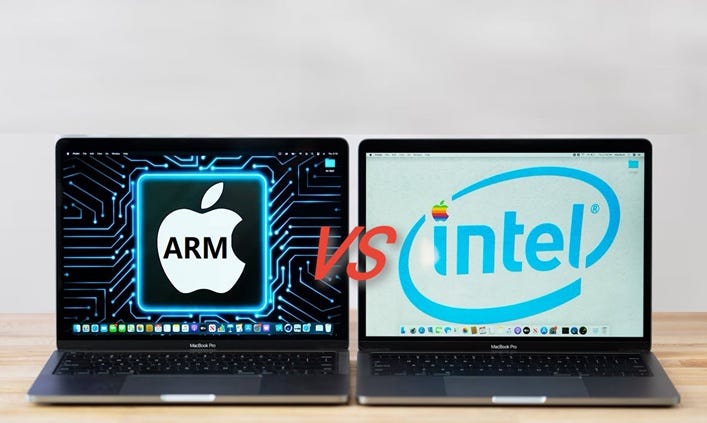
苹果正在整合供应 (Apple Is Integrating Supply)
Apple is always persisting in integrating everything from components on a logic board to Apple devices like the iPhone, Macs, Apple Watch, and AirPods to supply and distribution lines. That is, Apple is integrating the supply of processor chips under its centralized control in order to create more customized features into its Apple devices.
Apple一直坚持将所有东西集成在一起,从逻辑板上的组件到iPhone,Mac,Apple Watch和AirPods等Apple设备,再到供应线和配电线。 也就是说,苹果公司正在其中央控制下整合处理器芯片的供应,以便在其苹果设备中创建更多的定制功能。
Apple started to develop its own A-series ARM chips on the iPhone and even iPad since it wanted to integrate the chip supply under its own control, rather than relying on Qualcomm. The Apple T1 ARM chip in the MacBook Pro and the T2 ARM chip in the iMac Pro also enable Apple to integrate the supply of the CPU cores, which brings powerful customized phone features like Touch ID, FaceTime as well as TouchBar.
苹果开始在iPhone甚至iPad上开发自己的A系列ARM芯片,因为它希望在自己的控制下集成芯片供应,而不是依赖高通。 MacBook Pro中的Apple T1 ARM芯片和iMac Pro中的T2 ARM芯片还使Apple能够集成CPU内核的供应,从而带来强大的定制电话功能,如Touch ID,FaceTime和TouchBar。
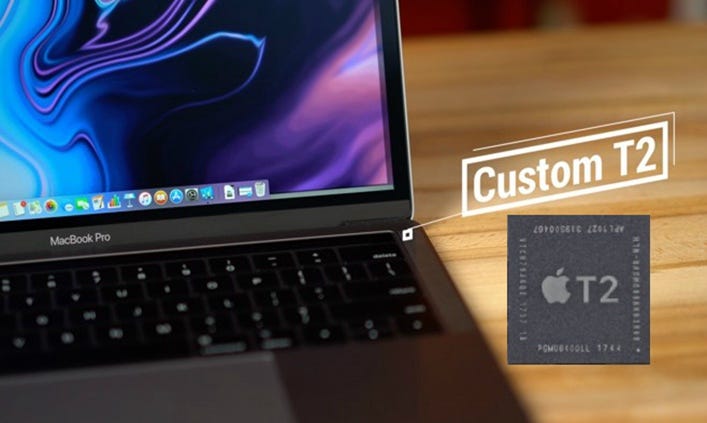
苹果计划在不同的苹果设备上统一操作系统 (Apple Is Planning to Unify the OS on Different Apple Devices)
Apple is planning to unify the OS on different Apple devices since the unification of OS means all Apple devices can share the same OS and the same apps. Currently, the iPhone and iPad have finished the unification since they are both powered by iOS. So if a laptop (Mac) running macOS can also run iOS, the OS can be unified.
Apple计划统一不同Apple设备上的OS,因为OS的统一意味着所有Apple设备可以共享相同的OS和相同的应用程序。 目前,由于iPhone和iPad均由iOS驱动,因此已经完成了统一。 因此,如果运行macOS的笔记本电脑(Mac)也可以运行iOS,则可以统一OS。
Actually, it’s the CPU architecture that makes the operating system work. That being said, if the CPU cores are based on the same CPU architecture, then the operating system can be unified. Now Mac is the only Apple device that is still using Intel x86 rather than using custom ARM CPU on which iOS runs. Hence, in order to unify the OS on different Apple devices, Mac needs to be moved on to Apple’s custom ARM so that it can run on iOS.
实际上,使操作系统正常工作的是CPU体系结构。 话虽如此,如果CPU内核基于相同的CPU体系结构,则可以统一操作系统。 现在,Mac是唯一仍然使用Intel x86而不是使用运行iOS的自定义ARM CPU的Apple设备。 因此,为了统一不同Apple设备上的OS,需要将Mac转移到Apple的自定义ARM上,以便可以在iOS上运行。
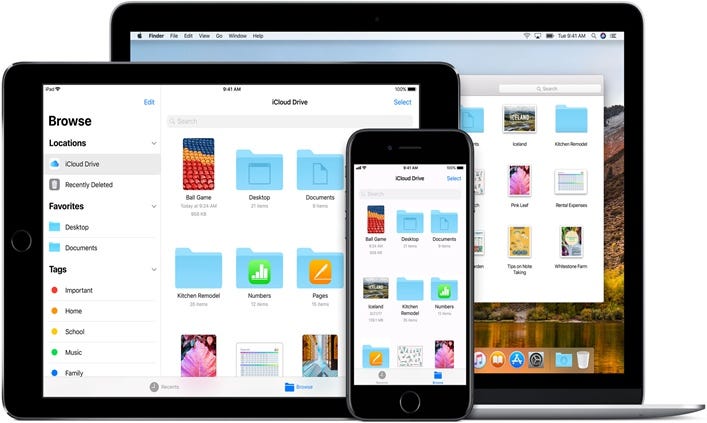
最后的话 (Final Words)
ARM to which Apple just officially confirmed to switch its Mac CPU from Intel is, in essence, a type of CPU architecture developed by ARM Holdings. This CPU architecture is the basis of a great number of ARM CPU cores in almost all smartphones and many laptops today. In the ARM VS Intel comparison, these two types of CPU cores are distinctly different in terms of the instruction set, an engineering standpoint, performance as well as efficiency, which makes them both have their strengths and weaknesses. However, ARM is, certainly the primary architecture of choice for the portable devices industry like smartphones for the predictable future.
Apple正式确认将其Mac CPU从Intel转换为ARM实质上是ARM Holdings开发的一种CPU体系结构。 这种CPU体系结构是当今几乎所有智能手机和许多笔记本电脑中大量ARM CPU内核的基础。 在ARM VS Intel的比较中,这两种类型的CPU内核在指令集,工程观点,性能和效率方面都明显不同,这使其各有优缺点。 但是,对于可预测的未来,ARM无疑是便携式设备行业(如智能手机)首选的主要体系结构。
Apple’s decision to make a transition to custom ARM for Macs is, in fact, unavoidable due to its capability of custom-ARM development and investment, its pursuit of integrating supply and unifying OS as well as Intel’s stagnation in PC processor. Anyway, let’s be excited to see Apple’s next era of the Mac running its custom ARM CPU.
实际上,由于其定制ARM开发和投资能力,对集成供应和统一操作系统的追求以及英特尔在PC处理器方面的停滞不前,苹果决定迁移到Mac的定制ARM是不可避免的。 无论如何,我们很高兴看到苹果运行其自定义ARM CPU的Mac的下一个时代。
macs14





















 2274
2274

 被折叠的 条评论
为什么被折叠?
被折叠的 条评论
为什么被折叠?








